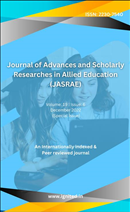Identification of Significant Clinical Attributes for Developing Heart Disease Prediction System
Improving healthcare through identification of significant clinical attributes
Keywords:
health care, medical care, medical service, disease diagnosis, heart disease prediction system, clinical needs, identification, significant attributes, floating window method, feature selectionAbstract
Health care, also known as medical care or medical service, is a system that aims to improvehealth-related services in order to meet the clinical needs of individuals. Disease diagnosis is a processof establishing the type of disease from the symptoms and sign. The decision on a particular type ofdisease is reasoned from collected information from patient’s history and examination. This paperdescribes a method for identification of significant attributes accountable for heart diseases. The floatingwindow method for feature selection proposed in this chapter has been applied to two datasets namely,Cleveland heart disease dataset collected from UCI machine learning repository and a cardiac datasetcollected from Sir Ganga Ram Hospital in Delhi. CVD prediction system developed using significantclinical attributes is quite affordable and easily accessible. It is proposed to perform similar experimentson voluminous datasets collected from various hospitals so that other potential significant clinicalattributes can be identified.Published
2022-12-01
How to Cite
[1]
“Identification of Significant Clinical Attributes for Developing Heart Disease Prediction System: Improving healthcare through identification of significant clinical attributes”, JASRAE, vol. 19, no. 6, pp. 709–714, Dec. 2022, Accessed: Nov. 05, 2024. [Online]. Available: https://ignited.in/index.php/jasrae/article/view/14248
Issue
Section
Articles
How to Cite
[1]
“Identification of Significant Clinical Attributes for Developing Heart Disease Prediction System: Improving healthcare through identification of significant clinical attributes”, JASRAE, vol. 19, no. 6, pp. 709–714, Dec. 2022, Accessed: Nov. 05, 2024. [Online]. Available: https://ignited.in/index.php/jasrae/article/view/14248









